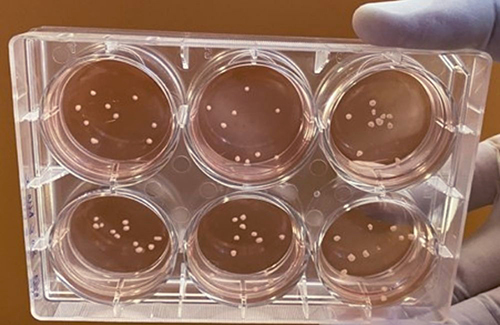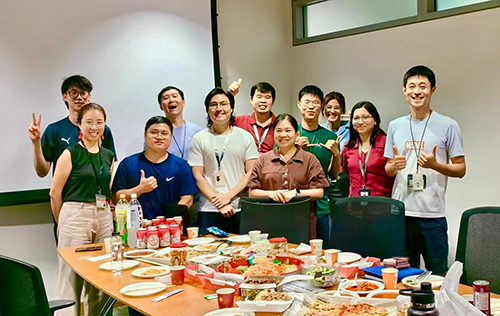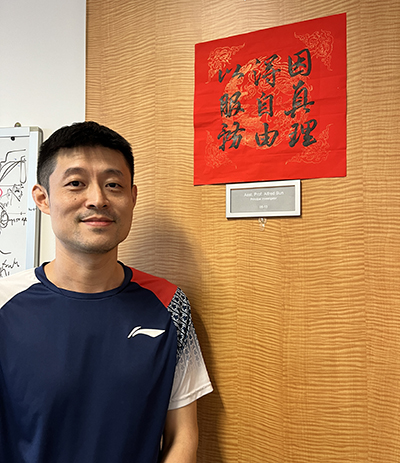Back
Tuesday, 01 Oct, 2024
Decoding Parkinson's Disease
Alfred Sun is an Assistant Professor with the Duke-NUS Signature Research Programme in Neuroscience & Behavioural Disorders. A native of Hangzhou, China, Alfred was a studious and inquisitive child. His academic excellence earned him the opportunity to study at The Chinese High in Singapore, on a full scholarship from MOE. Subsequently, he was awarded the A*STAR NSS-PhD Scholarship, and obtained his B.S. from Duke University and PhD from Stanford University.
Passion for neuroscience
During graduate school, Alfred pioneered a novel trans-differentiation method to convert human dermal cells into functional neurons. That ignited his interest in human cell-based modelling of neural development and degeneration.
“I am particularly fascinated by the human brain because it is so unique. Hence I want to create a human-based system to study it.”
Alfred started his neuroscience research in epilepsy. Back when he was a Senior Research Fellow at the National Neuroscience Institute (NNI), Professor Tan Eng King, an influential neurologist, offered him the opportunity to delve into Parkinson’s research, and his career took on a positive trajectory.
Finding a cure for Parkinson’s disease
Parkinson's disease (PD) is a progressive disorder caused by decreased dopamine production in the mid-brain. Dopamine is a neurotransmitter released by neurons to send signals to other nerve cells. It plays a vital role in planning and controlling movement. This is why people with PD often suffer from tremors and movement difficulties.
Therefore, discovering ways to prevent the destruction of dopamine-producing cells and helping them to regenerate is key to finding a cure for PD. However, it is impossible to study and conduct tests on these cells in a living person without causing harm. Insufficient access to human brain tissue and inadequacy of animal models has limited the study of brain development and neurodegenerative diseases.
In the past, researchers used cultures of two-dimensional (2D) layers of these cells in the laboratory. Unfortunately, potential cures that work on these 2D layers in the laboratory often fail during early drug trials. The reasons are multiple, and one of them is that brain cells are team players - they cluster around and communicate with each other and always function as part of a larger network in 3D.
All that changed in 2016.
World’s first lab-grown mini human mid-brains
In 2016, Alfred was part of the team of 12 researchers from Duke-NUS, NNI and the Genome Institute of Singapore who became one of the first in the world to grow mini mid-brain organoids in the lab.
This was inspired by a 2013 research published by German scientists who managed to grow mini whole brain organoids.
Stem cells were used to start the cultures. Every day for two years, at least one team member would be in the lab babysitting the cultures and measuring the growth and development of the cells.

Small pea-sized human midbrain-like organoids – which are essentially three- dimensional, multicellular, in vitro tissue constructs that mimic the human midbrain – are grown from human stem cells to enable scientists to study how the human brain develops and communicates.
After more than three months, black dots were seen on some of the cells. The team initially panicked, fearing that the cells had been contaminated by mould. But upon closer examination under the microscope, they realised that the dots were due to the dark pigment. It was a moment of celebration and huge relief.
Since then, Alfred has been creating mini brains with the Asian genetic PD variant to model human-specific neurodevelopment in Asians. This would allow him and his team to develop better and more targeted treatments for Asian patients with PD.
“I have encountered many PD patients on the SGH campus who require assistance due to sudden muscle rigidity, such as helping them get out of their car. This gives me more reason to want to find a cure for PD as soon as possible.”
Passion and dedication
Researchers are notoriously dedicated to their experiments. And then there’s Alfred.
As shared by his former mentor and now colleague, Associate Professor Shawn Je, Alfred’s dedication to his work is legendary.
“Stem cell research takes a lot of dedication, and many researchers work tirelessly to grow their cells. Alfred is one of them. I heard this story about him from his former colleague, Dr. Andrew Yoo, now a professor at Washington University in St. Louis. Andrew said that when Alfred was still a graduate student at Stanford, he went to the dentist to have all of his wisdom teeth removed, which usually requires plenty of rest and painkillers. Nevertheless, Andrew found him in the tissue culture room, changing the culture media with blood dripping from his mouth.”
Mentor at work, father at home
Yet research isn’t the only thing Alfred dedicates his working hours to. He also spends much of his time mentoring young researchers.
"Alfred is not just a great scientist, but also a kind and patient mentor,” shared fellow colleague Assistant Professor Cao Mian. “He really takes the time to teach and inspire students and young researchers, encouraging them to stay curious and push forward, just like he does. His energy and love for what he does are truly motivating for everyone around him.”

Alfred and his lab mates.
Outside of work, Alfred is a father to three boys.
“Fatherhood has taught me a lot, especially patience. It also taught me to accept that we can’t expect everyone to be who we want them to be.”

Alfred and his family.
So do any of his boys aspire to be a neuroscientist like him some day?
“Unfortunately, they are more impressed by my friends who are in glamourous careers such as banking,” said Alfred with a chuckle.
The truth seeker
Alfred’s life motto can be summed up in nine words: 因真理 得自由 以服务, which translates to “The truth will set you free and enable you to serve the world.”

Alfred with his life motto pasted on his office door
“When we get down to the truth of the matter, we will find the solutions we need, be it at work or in our personal lives,” explained Alfred.
“In research, we seek out the truth behind health problems so that we can find effective therapeutics to help patients. Hopefully some day, soon enough, we can free the world of Parkinson’s.”